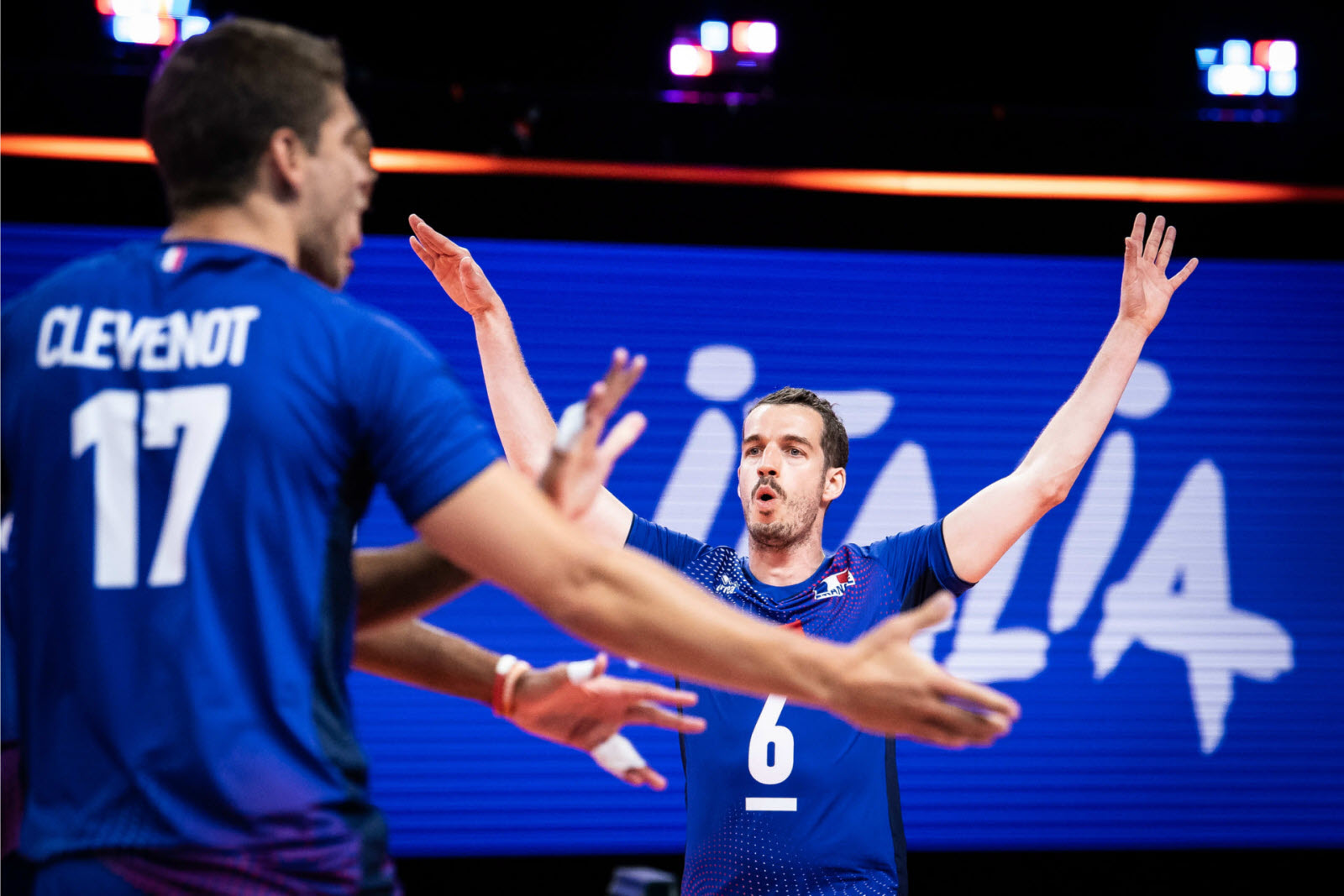| Happy Birthday : |

Volleyball - Olympic Sports
![]()
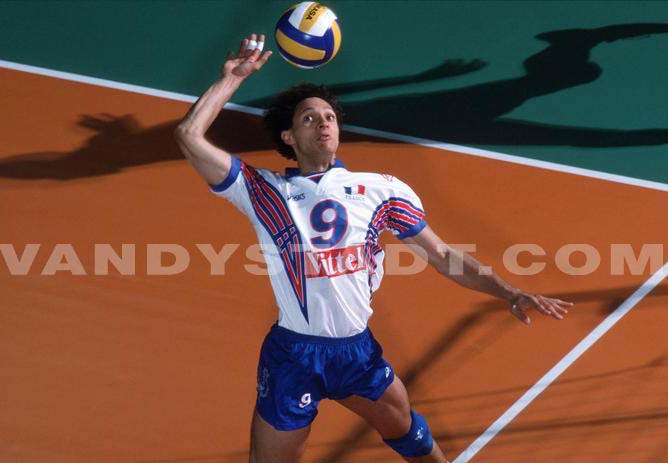
Dismissed 105 906 - Men: 57 127 - Women: 48 779 - 1 743 clubs
HistoryThe creation of volleyball dates from 1895.
William G. Morgan (1870-1942), American, born in the State of New York remains in the sports history as the creator of the game of volleyball which he had originally given the name "Mintonette. Student at Springfield College, college controlled by the "Young Men's Christian Association (YMCA, Youth Clubs Christian), WG Morgan met James Naismith, the inventor in 1881 in basketball. The student discovers that activity, is doing it and adopt it. Appointed in 1884, Director of Physical Education Section of the YMCA Holyhoke in Massachuetts, he realizes that basketball does not fit all students and especially to businessmen attending night courses. He realizes the need for more recreational game not causing any contact, but to make an intense effort and ensuring true relaxation at lower risk of injury.
In an article published in 1915, he said: "I do not know any similar game of volleyball to help me, what we thought was the result of experience gained in the gym. Tennis has, in his opinion, many advantages but requires rackets, balls, nets and
ers equipment impractical to do group work. Morgan, however, retains the idea of using the net. He placed about 6 feet 6 inches (1m 98), just above the size of an average man. It tries
ers balloons. The basketball court is too heavy and too big, it removes the bladder but it is too light. Finally, it is manufactured by AG Spalding and provides a leather ball with rubber bladder, the balloon meets. We are in 1895. In 1918, the number of players per team is limited to six and in 1922 the maximum number of ball contacts allowed is three.
On the initiative of Paul Libaud, delegates from thirteen federations will meet in Paris to be born April 20, 1947,
Federation Internationale de Volleyball (currently 218 nations affiliated). Volleyball became an Olympic sport in 1964.Currently there are approximately 250 million regular players (in the league) and 800/900 million casual gamers with 55% of women against 45% men
The French Federation of VolleyballOn February 2, 1936, the first president, Felix Castella, associated with Edward Dechambre write the first regulation whose fundamental points are:
- Field measurement of 15 to 22 m to 9 to 11 m.
- The height of the net is set at 2 meters 40
.- The number of players is unlimited.
- The service is performed behind the whole bottom line (again in force in 1994)
- The game is played in straight sets winning 15 to 21 points.
- Only 7 errors (actions or dispositions of players) give rise to any sanction and does not refer to a specific technical issue.
Key Dates1900. The height of the net increased from 1.98 m to 2.28. The play is set in 21 points. The team comprises a maximum sixteen players.
1912. The land area increased from 7.6 x15 m to 10.6 m. x18 There are six players per team with a rotation between each service.
1916. The winner is set in 15 points and not in 21 points. The winner of the game must win two of three sets. The height of the net increases to 2.43 m (actual size). You can not "hold" the ball (foul).
1920. The land area increases to 9x18 m (size still in force).
1922. Players from the back line can not attack. To win the set (around 14), we must score two points more.
1923. Now, players must wear numbers on their jerseys. It allows twelve replacements for six players. It is a foul when one enters the land of the enemy.
1925. Introduction of two timeouts for each team.
1932. Introduction of dead time to one minute.
1948. The first European Championships in Rome.
1949. The first World Championship held in Prague.
1953. It regulates the role of the referee.
1957. The dead time lasts up to 30 seconds. The second referee appeared.
1984. It is forbidden to counter service.
1988. Introduction of the tiebreaker in the 5th set (by scoring a point for each service). The set ends on the 17th point. In case of a tie, there is one unit apart.
1992. In case of a tie in the tie-break to 16 points, it takes two point lead to win.
1994. We can touch the ball with any part of the body, including the foot. The "double" is canceled.
1998. Introduction of counting points continuously (RPS).
1999. Matches are played over five sets.
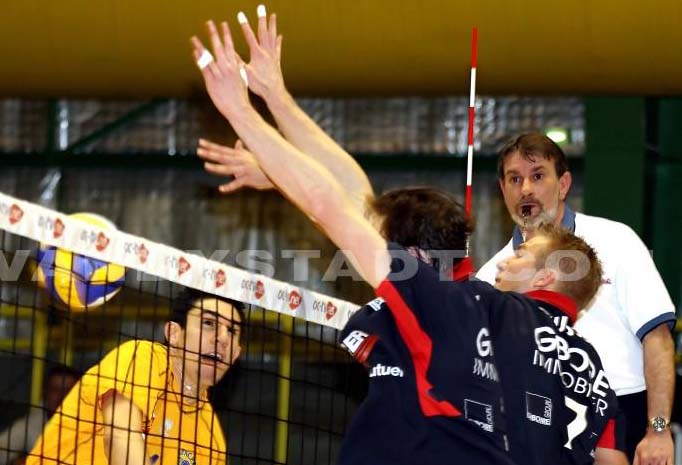
Two teams of 6 players each compete on a playground
ized by a net, striking the ball before it falls to the ground and sending the opponent over the net. Each team has 3 touches to return the ball (in addition to the contact of cons).
Field 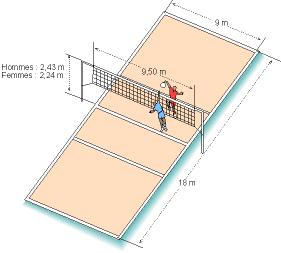
The play area includes a playground area and free. It must be rectangular and symmetrical. The playing field measures 18 x 9 m, surrounded by a zone free of at least 3 m wide on all sides. The free playing space is the space above the playing area and free of obstructions to a height of at least 7 m measured from the playing surface
For world competitions, the free zone at least 5 m from the sidelines and at least 8 m from the lines. The play area must be free of at least 12.50 m in height measured from the playing surface for the Olympics and world championships, the free zone is at least 6 m from the lines side and at least 9 m from the lines.
The netThe net is 1 m wide and 9.50 m long. It is made of square mesh and black 10 cm square.
Height: 2.43 m center for men, 2.24 m at the center for women.
The balloon
It uses 3 balls during games to avoid delays.
- The ball is classic white or light indoors. Balloon lights (approved by the FIVB) can be used.
- Circumference between 65 and 67 cm.
- Weight: between 260 and 280 g.
- The pressure must be less than 0.30 to 0.325 kg / cm ².
Equipment PlayersPlayers must wear a jersey (numbered 1 to 18).
Teams Number of crewThe number of players must be of 6, whatever the circumstances. The composition of a complete team, including substitutes, must not exceed 12 players.
Replacements- Substitutes and Coaches must place the opposite side of the field, facing the first referee.
- Replacement of players takes place during stoppage time at the request of the captain or coach, either the first or second referee.
- A team can change six players maximum per set.
- No player may enter the game more than twice per set, unless his team is incomplete because of an accident or injury to any player and that the normal changes are exhausted and can then replace the injured player or accident, whatever the position occupied by that player.
The durationA match can last between 75 and 140 minutes.
Downtime1. A time out for rest may be granted by a two referees only when the ball is offside.
2. During the dead time, players must leave the field.
3. Each team may take two timeouts to rest per set. The duration of such suspension of play is 30 seconds. Two time outs may be called consecutively unless the game has resumed between applications.
4. If by mistake a third time out is called, it will be refused without penalty.
5 In the event of injury or a suspension of three minutes is granted and will not be counted as downtime. The interruption of 3 minutes can take place only in case the injured player can not be replaced.
Stoppage time between setsA stop up to three minutes is allowed between each set. This decision will be five minutes between the fourth and fifth set.
The main rules Striking the ball1. Each team may carry up to 3 keys successive ball to send the ball towards the opponent, except for contacts at cons.
2. The ball may be struck by any upper body, including to the waist.
3. A ball can touch any number of places (from waist), provided that it is simultaneously and the ball is not required but strongly hit and bounce ..
4. Ball hit
A player touches the ball or is touched by it when it is in play shall be considered touching the ball.
5. Ball held
When the ball comes to stay temporarily in the hands or the arms of a player, it should be considered seizing or holding the ball.
The ball must be clearly hit, if it is accompanied, lifted, pushed or carried, it will be considered fulfilled.
A ball clearly hit from below with the backs of the hands or forearms, is "good".
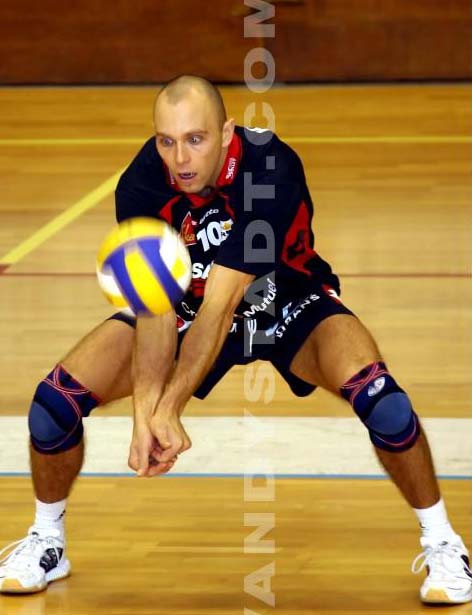
Masters draw lots for the site or service. The winner chooses either the land or the right to serve first or receive the service.
Change FieldAfter each set except, possibly, in the deciding set.
When the two teams are tied and one team has totaled 8 points in the deciding set, the teams change sides automatically, but the service continues to be made by the player who served at the time of change.
The serviceThe service is putting the ball in play by the right rear, hitting it with one hand (open or closed) or any part of the arm, to send over the net into the opponent's . The player goes to the location of the land reserve for this purpose and hits the ball. At this time, the service becomes effective.
The ball must be hit much, after having been launched into the air or after releasing the ball. It is illegal to hit a ball stuck on the other hand.
Change of positionTo perform the service, the team receiving the ball must first rotate in the direction of clockwise.
Players can completely change position relative to the previous set, provided that the marker is notified before the start of the set.
Button simultaneouslyIf opposing players simultaneously knock the ball over the net, the player of the camp opposed to the projection of the ball will be considered as having affected the latter.
After the simultaneous touch of the ball by two opposing players, the team above the ground which is found the ball right back has 3 buttons.
If, after the simultaneous touch of the ball by two opposing players, the ball falls to the ground within the field, the field team where the ball is dropped is faulty, for cons, if the ball falls outside the ground is the opposite team who is at fault. If the ball is held simultaneously by two opposing players, there is a double fault (ball in hand).
The cons1. The team conducted a cons the right to make 3 more keys to return the ball to the opponent.
2. Any player participating in a cons in which the ball is hit right to the next key, however, the recovery of the ball will be considered first of three keys allowed.
3. If the ball hits one or several players making the cons, it will be counted only key, even if this key is not simultaneous on the part of players cons.
Thurs from the net1. Ball touches the net when the ball during the game (other than service) touches the net between the two antennas, it is considered good and the game continues.
2. Ball into the net between the side bands. Can be resumed (except service), provided that the player himself does not touch the net. If the ball was hit three times by a team that hits the net (without crossing) the referee shall whistle "stop the game" after the fourth key or touch the ball with the ground.
.jpeg)
1. During the cons
During the cons, the touch of the ball in the opponent's court, over the net, before the opposing action to send the ball into the other camp is made, constitutes misconduct.
2. After the smash
The portion of the hand over the net after the smash is ok.
Scoring. Game ResultsAll international matches are played best of five sets. The first four sets are played continuously and 25 points. A set is won when one team leads by 2 points difference, with a minimum of 15 points. In case of equality of two sets everywhere fifth set to take place in 15 points. When the score reached 14-14 in the final set, he must continue to play in achieving the maximum score of 17-16.
Changing rulesIn the 90s, the FIVB approves several amendments of the game to make it even more dramatic, dynamic and telegenic actions in volleyball.
Now:
- The ball can affect any body part;
- The line is three meters long on each side by a dotted line of 1.75 m;
- The pressure of the balloon is reduced to 0,30-0,325 kg/cm2;
- The ball that crosses the vertical plane of the net outside the crossing space, may be brought into play for the team if:
- The attacking is not affected
- When the ball is back, back across the vertical plane of the net outside the crossing space on one side,
- Rule of 3 buttons to be respected,
- The ball is brought back before crossing the line of 3M opponent (or extension).
- Introduction of the tiebreak - downtime techniques: two one minute each for the sets 1 to 4 when the team that leads the score reached 5 points, then 10 points.
- Each team also has a timeout typical 50 seconds per set. In the 5th set (tiebreaker), there is no technical timeout, but only 2 regular timeouts of 30 seconds each;
To win the tiebreaker in case of a tie at 16 points, it takes 2 point lead for the win.
- Touching the ground with an opponent (or) or feet (the) hand (s) is permitted if:
- Part of (the) walk (s) or (the) hand (s) remains in contact with or directly above the center line;
- That the act does not interfere with the play of the opponent;
- Freedom to serve all along the baseline of the field (9 meters)
- Remove the concept of double faults in the first reception of the team and the liberalization of touch the ball - Enable the button accidentally net.
- In order to broadcast a live game of volleyball on TV, the FIVB has decided to shorten the duration of a party and play two halves of approximately 32 minutes. If necessary, we played a third round with a tie-break of 15 points.
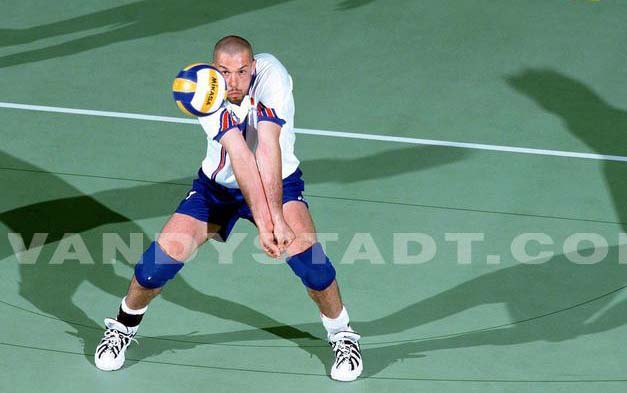
Since 2000, the International Federation has adopted a series of new rules:
- The game is played best of five sets or sleeves. The first four sets are played to 25 points and brand continues. To mark the point it is no longer necessary to hold the service. A fifth set is played to 15 points and in this brand continues. This new system is called the Father or the "Rally Point Service.
- Coach, without disturbing the game can give instructions to his team standing or moving to the bench of his team in an area between the extension of the line three feet and the warm up area .- Each team can register a libero, defensive player, can not play that position 1, 5 and 6 (or back online). He must wear a shirt different from its partners and substitutions are unlimited. It is prohibited to attack anywhere. He did not have the right to serve.
- There are more attempts to use a single test (two cons before) is now authorized .- balloon lights can be used in official matches.
- Three penalties are now set: insolent conduct, offensive conduct and aggression.
The Beach Volleyball (Beach or BVB)According to some, volleyball beach appeared on the beaches of Santa Monica, California in the 1920s. The first real competition was held in Brazil in 1941 under the name "Campeonato de Areia" followed ten years later by a tournament beaches '5 'in California: Santa Barbara, State, Corona del Mar, Laguna and San Diego.
In France, tournaments were held in 1924. The game of beach volleyball starts in the Cotes d'Armor, La Baule, Pornichet and Palavas-The Plots, the true birthplace of beach volleyball French.
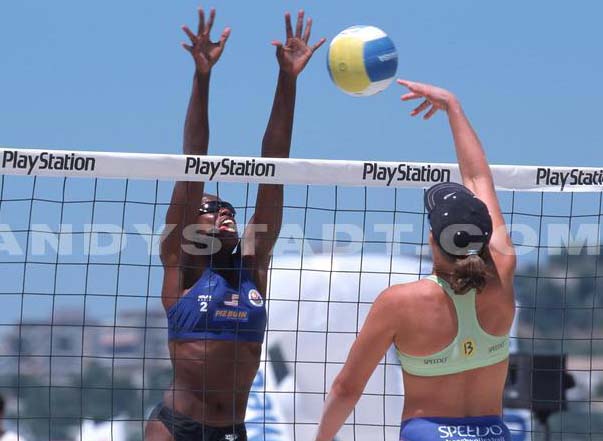
In 1949 Soulac Lacanau and opens a huge center where Montalivet Germans, Belgians and Dutch will find the beach volleyball for the first time. Moreover, the national teams of Germany and Switzerland spend their holidays Montalivet.
In the 80s we note that the practice of beach volleyball has been a phenomenal growth in Brazil and the United States in the form of competitions between teams of 2 players (2x2). The first official competition, recognized by the FIVB, took place on Ipanema Beach in Rio de Janeiro in 1987 as winners: the legendary American pair, Smith and Stoklos, then become five times world champions in the discipline!.
The volleyball beach is a sport played by 2 teams of 2 players (or beacheur / beaches) on sandy ground (flat and uniform). This formula is also used for the Olympics
Europe has always preferred the formula of 3 players per team (3x3) or even 4 or 6.
The goal is to drop the ball into the opponent and prevent him from falling into his own camp by sending over the net. The ball is put into play by the player serving. It is played by striking it with any body part. A player is not allowed to touch the ball twice consecutively (except the cons and the first key). The rally continues until the ball touches the ground or sent outside the confines of the game or a team can not return it properly.
Only the serving team can score a point (except the deciding set).
When the receiving team wins the rally, it gains the right to serve (also scoring a point in the deciding set). This is called "service change".
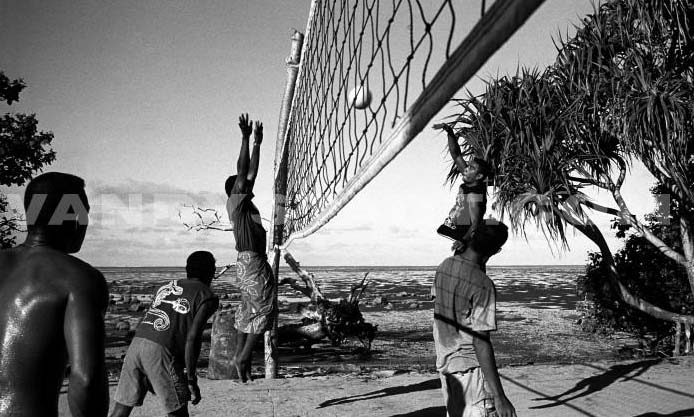
- The formula in one set
A team wins the set and the match by scoring 15 points with 2 points difference. If equal to 16/16, the team that scores the 17th point wins the set and the match with one point difference.
- The formula in straight sets winning by 21 points with a tie-break (new knockout system).
- The formula best of three sets.
The team that wins the first two sets of 12 pts won the match. If equal to 11/11, the first team scoring the 12th point wins the set. A team wins the match by winning 2 sets.
Set decisive in case of equality of sets 1 / 1 after the first two sets, the team must score 12 points a 2 point gap to win the 3rd deciding set. The deciding set is played as a tie-break, a point is scored when a team wins a game exchange
Remember:
Field is a rectangle measuring 18 mx 8 m, surrounded by a zone free of at least 3 m and with a space free of obstructions to a height of 7 m from the ground. Minimum depth of sand: 40 cm. The terrain isized by a net of 9.5 m long (height 2.43 m for men and 2.24 m for women rounded up posts is 2.55 m). Two lines (5 / 8 inches wide) on each side and two bottom lines (bright) limits the playing field there is no center line.
The players play barefoot (shoes after approval of an arbitrator) and are dressed in a swimsuit, shorts and cap.
The ball (brightly colored, orange, pink, red) has the same weight (260 to 280 grams) and girth (65 to 67 cm) in the ball room. The pressure of the balloon by cons is two times less (from 171 to 221 mbar). Three balls must be used in world competitions.
.jpeg)
- The moves are prohibited in attack, so the ball must be struck.
- The ball may be kept between the fingers momentarily on the defensive.
- There is no position except for the server. The other three players must stay within the field.
- There are 4 time-outs (2 indoors) per team per set.
- The cons account for a key. A doubled cons become a ball attack.
- The team switching sides every 5 points.
The only international circuit of 2 x 2 recognized by the FIVB, called "World Tour": 26 events for men and 12 women, with the final tournament played in Brazil. He fights since 1997 with a system of knockout matches will compete in two sets, winning by 21 points with a tie-break.
The best Beachers 20th century- Brazilian pair Jose Loiola and Emanuel Rego and the American pair Sinjin Smith and Randy Stoklos men
.jpeg)
- Natalie Cook and Jackie Silva AUS BRE women.
The beach, a demonstration sport at the Olympic 92, is an Olympic sport since 1996.Copyright Sportquick/Promedi





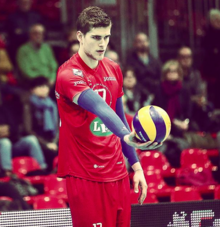


.jpg)
.jpg)
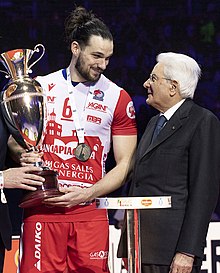
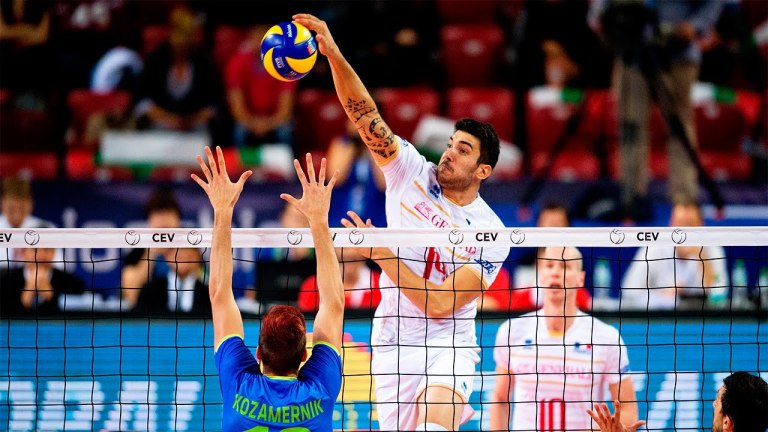
(2).jpg)
(21).jpg)
